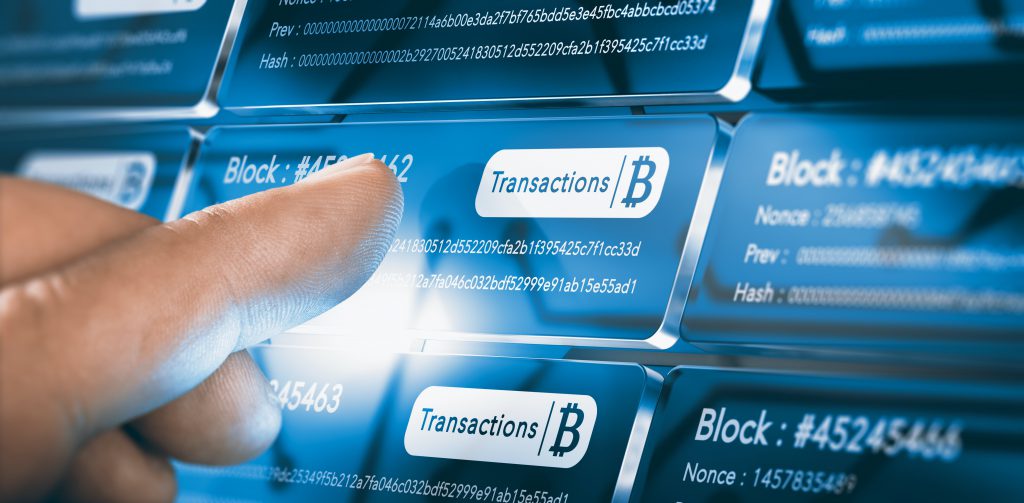
1.3 How do Blockchains work?
1.2 What is a Blockchain? (Part 2 of 2) finalised the initial introduction to Blockchain, and now the time has come to take your current understanding and explore how this advanced technology works. As always, we aim to simplify all the content we share, giving all our readers the opportunity to digest the information and end the blog with a confident understanding. In order to achieve this, we will first explore a current technology with a similar functionality. Followed by a breakdown of the different pieces that create a Blockchain network, with some final details about other key features that make the Blockchain technology possible.
The Introduction of Shared Ledgers
Unlike Blockchain, a ledger isn’t something that has been introduced in recent years, they actually date back to the 15th century and many of you will have used a ledger yourself, whether that be professionally or personally. In recent years many businesses have adapted the technology behind a ledger to support the way they operate. Businesses and professionals have evolved the current technology, introducing the shared ledgers, where transactions are only recorded on the network once and there are no duplicates, which is what businesses would normally see with their traditional networks. It is these shared ledgers that the Blockchain technology has evolved from as advancements in the world expect more from the technology, we use day to day.
What are the key characteristics of a shared ledger?
You may be wondering if you have ever had any involvement in a shared ledger, and it is highly likely that you have. But if you are unsure, see the key characteristics detailed below to understand whether there is a shared ledger in place when you are next in work:
- It records/stores all transactions across the business network in one place.
- Everyone who participates in the network has access to all information stored.
- Users can only see the information where access has been granted, it is a permissioned system (continue reading for more on permissioned systems).
Permissioned vs Permissionless Blockchains
Mentioned earlier, a permissioned system was a key characteristic of the current shared ledgers you may already be using. However, Blockchains work in one of two ways and that is the standard/traditional permissioned option (similar to a shared ledger), where users who participate in the blockchain will grant different levels of access to individual users. So, if you gain permissions to a specific transaction/block, you will have access to all available data, however if you don’t get granted permissions, you will only be able to see the transaction has taken place and all other details will be forbidden. Whereas a permissionless Blockchain does exactly what it says on the tin and is the opposite, permissions won’t be set, and everyone will have 100% transparency. Choosing between the two all depends on the importance of the data and whether you trust all participants with full transparency of what you are storing.

Blockchains have been modelled on the technology of a ledger and can complete the same tasks and work in the same way as your current ledgers, but through evolution, the possibility of any hackers tampering with the information has been removed.
BlockUno, 2020
Blockchain Summary
Before we break it down further and take you through the details, we have pulled together a short summary that explains how Blockchains work. Just like the illustrations you will have seen, data is stored in blocks that are then linked together to form a chain. As transactions grow, the Blockchain mimics this movement and grows with them adding additional blocks to the chain.
The Individual Blocks
Each individual block is made up of a hash (this is a digital fingerprint or unique identifier). Contained within each block is a timestamp of recent valid transactions and the hash includes the hash from the previous block. Each block records the time and sequence of transactions and this information is then logged into the blockchain within a separate network monitored by rules agreed on by the participants.
Connecting the Blocks
When connecting the blocks together, you have to look into the block hash. The previous block hash always connects the blocks together and stops any alterations to the blockchain such as another block being added between the existing blocks. By connecting the blocks using this method, it strengthens the security and verifies the previous block, consequently creating the entire blockchain. The method renders the blockchain tamper-evident, lending to the key attribute of immutability.
How is all of this possible?
Well, cryptographic technology makes this possible – using digital certificates. Similar to passports, the use of digital certificates can provide verified and legitimate information that cannot be forged. The blockchain network enforces digital certificates to enhance safety.
What about Smart Contracts?
Finally, we want to make you aware of one key feature that supports the Blockchain technology and it is a smart contract. Smart contracts are heavily discussed because we need these in place to make it possible for Blockchains to work. It is an automatic process as part of any transaction added to a Blockchain and it is an agreement or set of rules that administers the business transaction before adding it to the Blockchain.
Looking for more information about Blockchain?
Now, you have come this far, you will understand both what a Blockchain is and how it works, giving you a head start on many people who still haven’t researched this advanced technology. As always, if you have any questions to solidify your understanding, leave comments below or reach us on all our social media channels. In the meantime, we will be preparing our launch of 1.4 Who invented, owns and controls the various Blockchains? a very interesting, detailed dive into the unknown about the people we can’t directly link to Blockchain, released 10/04/2020.
No Comments